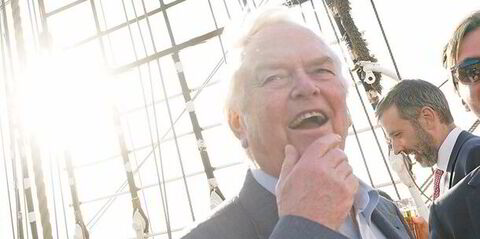The Today Makes Tomorrow Group (TMT) chairman said the Hybrid Ship design enables a variety of vessels, including bulk carriers, tankers, car carriers and LNG carriers, to enhance fuel efficiency.
“The innovation consists of a conventionally driven main propeller and an electrically driven duct propeller,” Su said in a statement.
This combination allows for reduced bunker use, particularly when a vessel is travelling with minimum ballast, he claimed.
Su said he also has a patent in Liberia for the system dating from 2014 and lasting for 20 years.
TMT brought 16 ships into a June 2013 Chapter 11 filing in Houston in the hope of reorganising the company, but has lost all of them in what turned into a court-approved liquidation.
But Su continued to fight for compensation for a patented piping system on a TMT VLCC that was sold to the Onassis group in the court process.
More patents pending?
“Several patents will continue to be pursued by Mr Su and his partners, who made filings with 25 shipping nations in total,” the statement added.
Su said: “I trust that as more patent offices register Hybrid Ship, the technology will be more readily adopted, which will help tackle problems associated with the transfer of harmful aquatic organisms and pathogens through ballast water.
"Such a transfer has already seen the Pacific saury affected – a species found in the subarctic and subtropical North Pacific that is regularly harvested by Chinese, Japanese and Russian fishermen.”
A hybrid vessel requires minimum ballast water, and therefore reduces the risk of water contamination affecting the eggs of the fish, he continued.
Su said the hybrid system was fitted in all TMT ships in the Whale, Elephant and Ladybug series built by Hyundai Heavy Industries and DSME in Korea.
The shipowner also revealed another of his inventions, Oceannet, which he claims enables the transmission and reception of data via an offshore mobile communications network.
This is patented in the UK, the US and South Korea.
It relays the best navigation routes when vessels are travelling with reduced ballast, thereby "maximising efficiency while at the same time minimising their impact on marine life."



